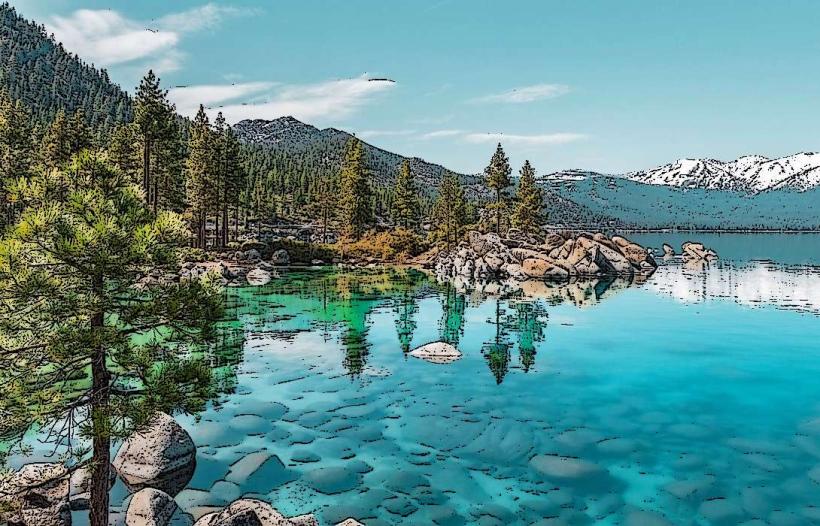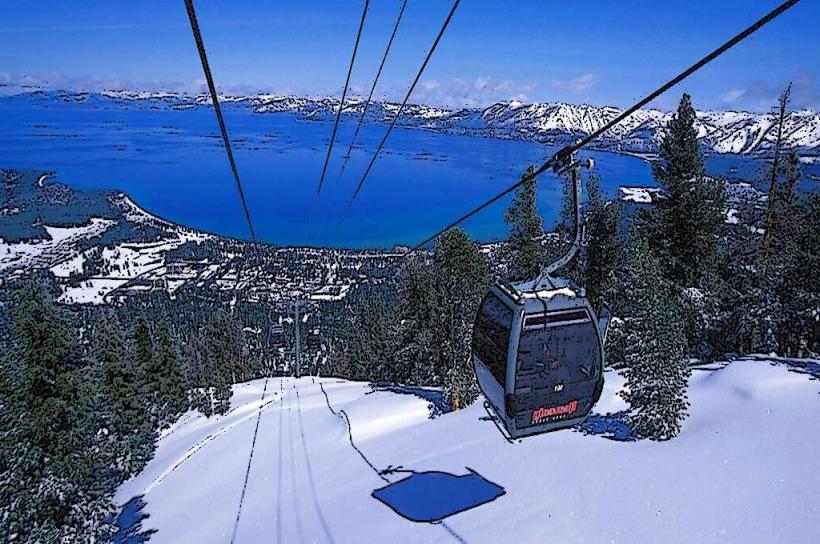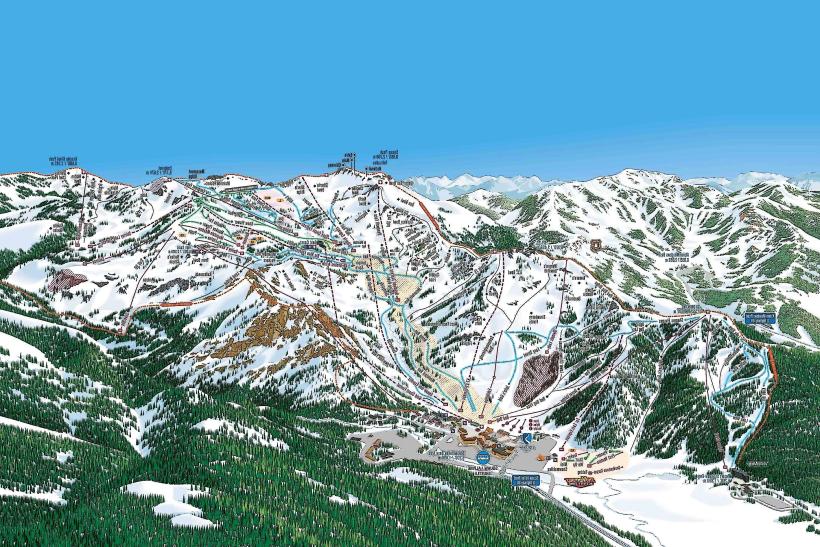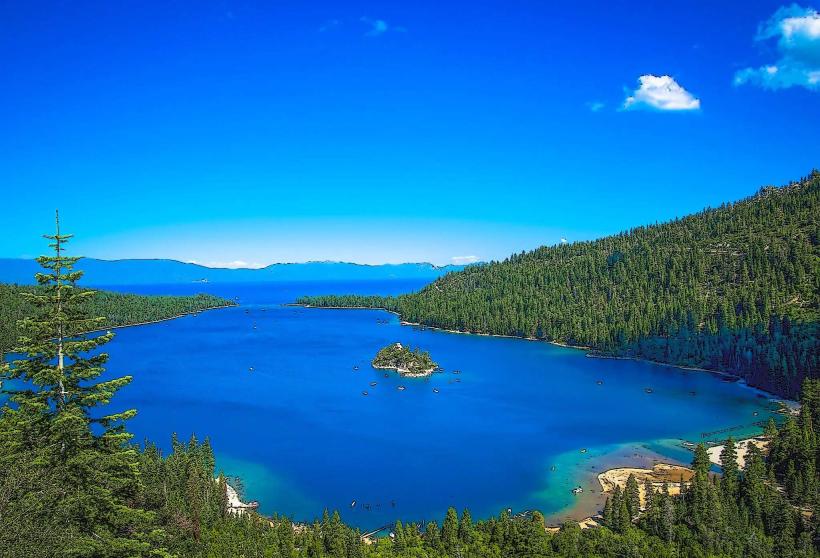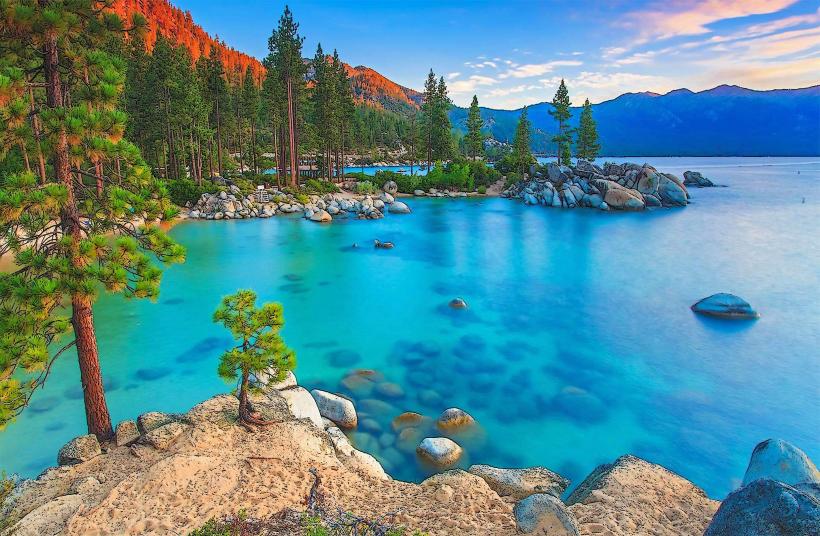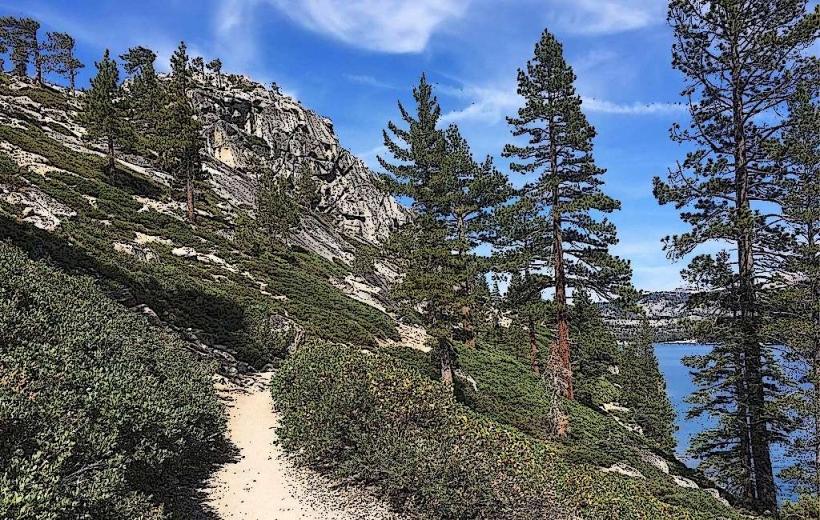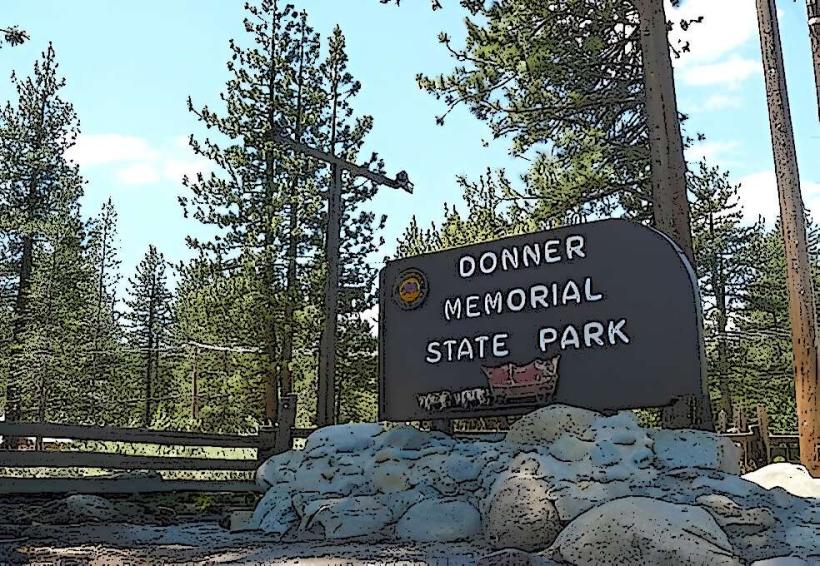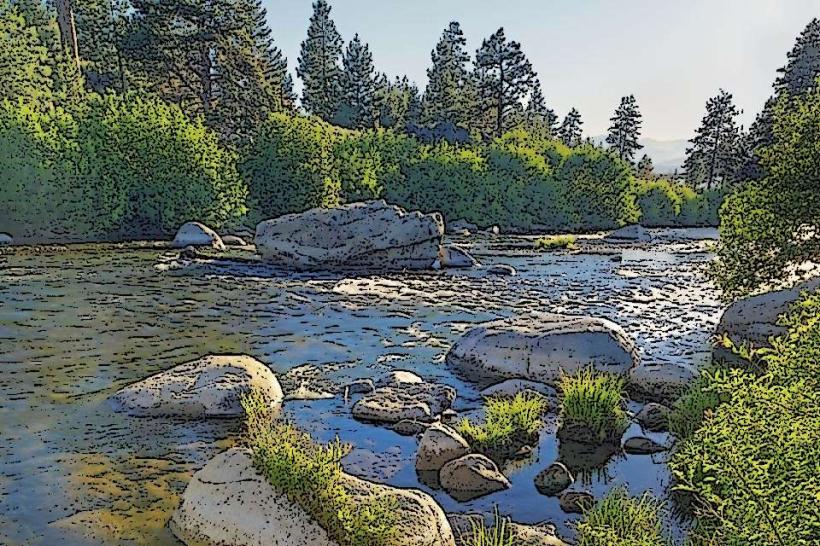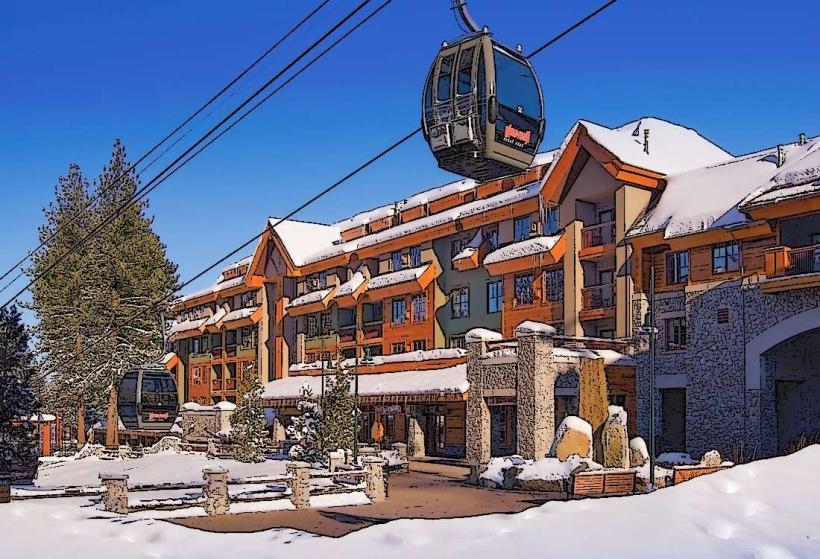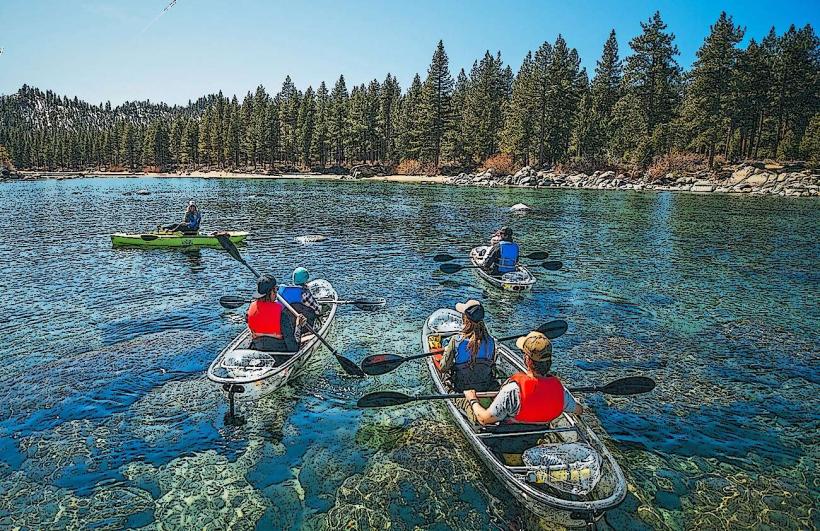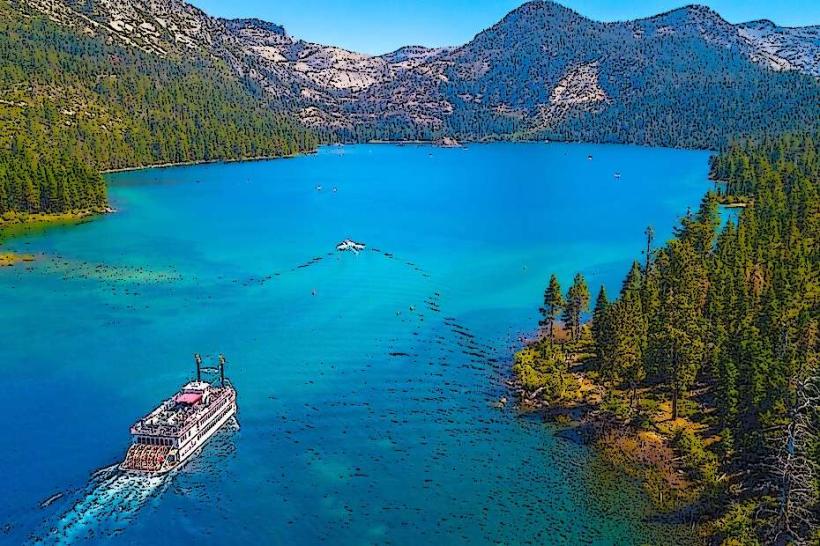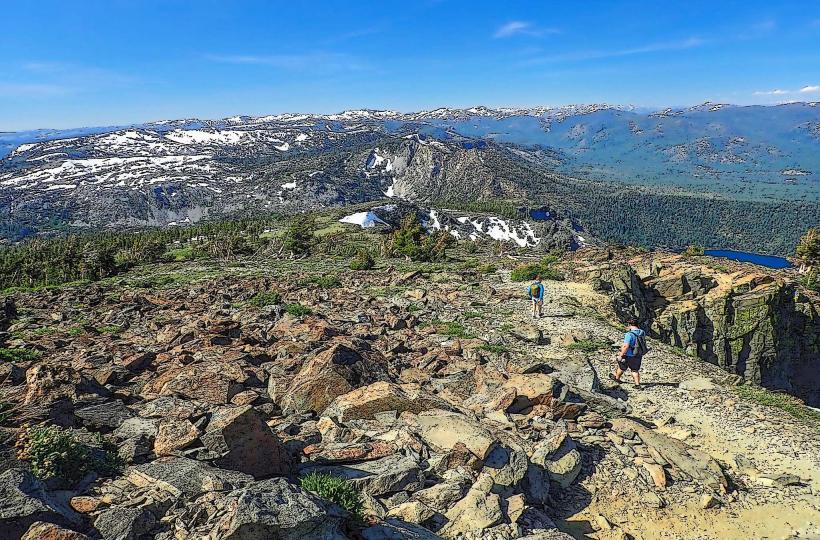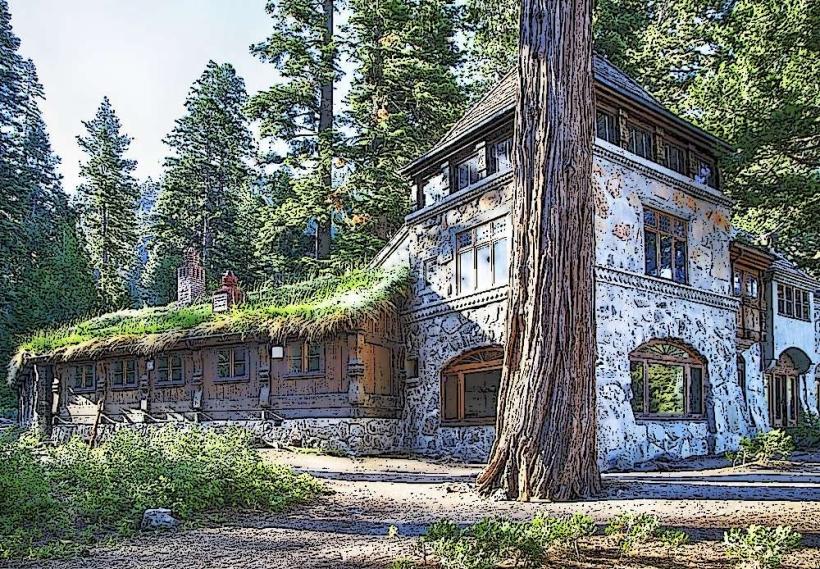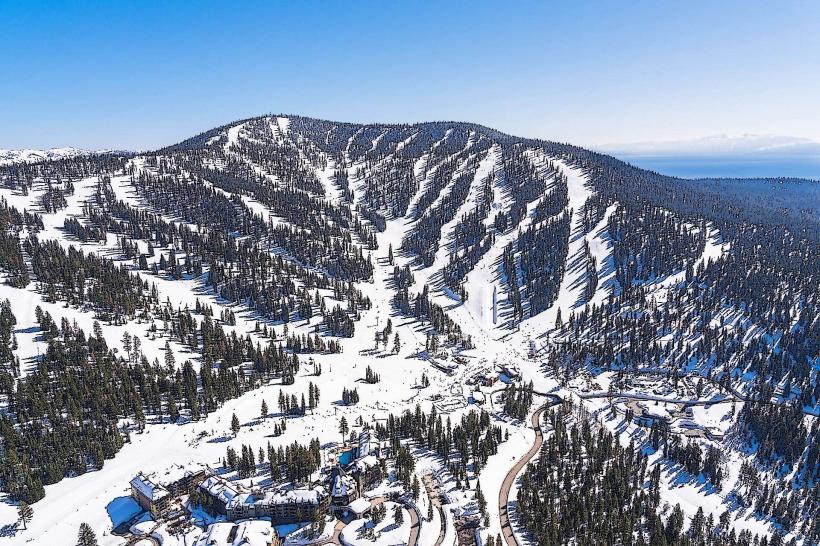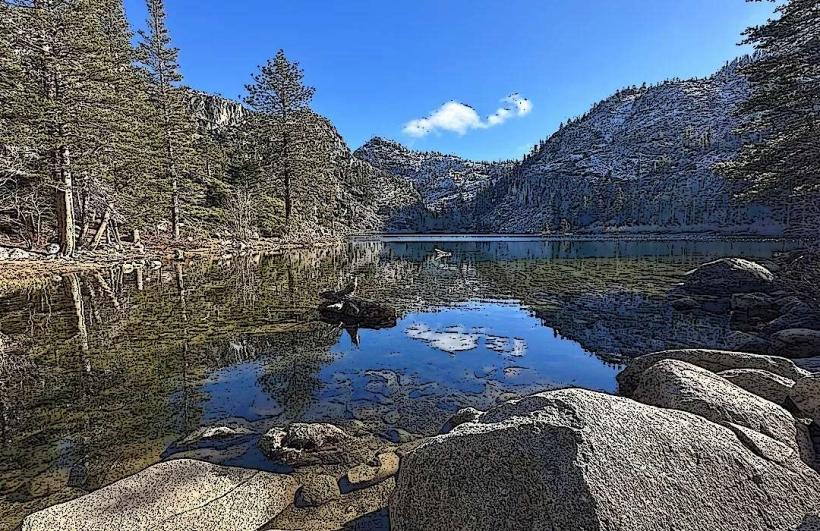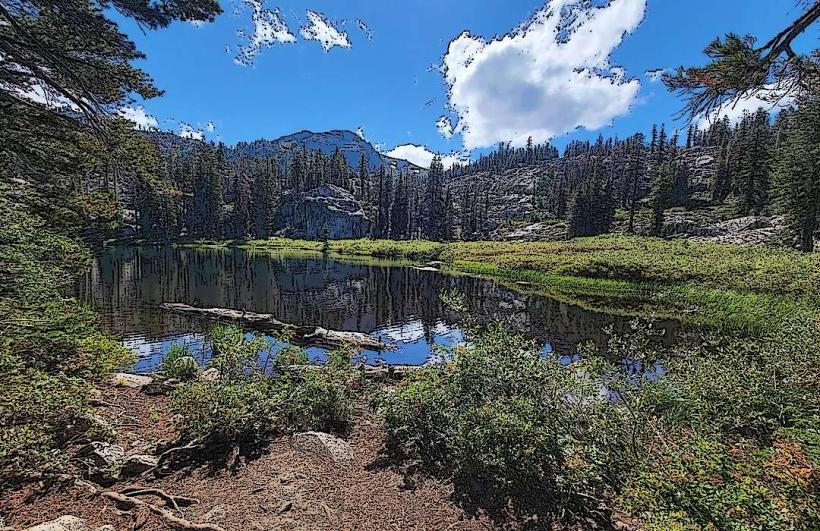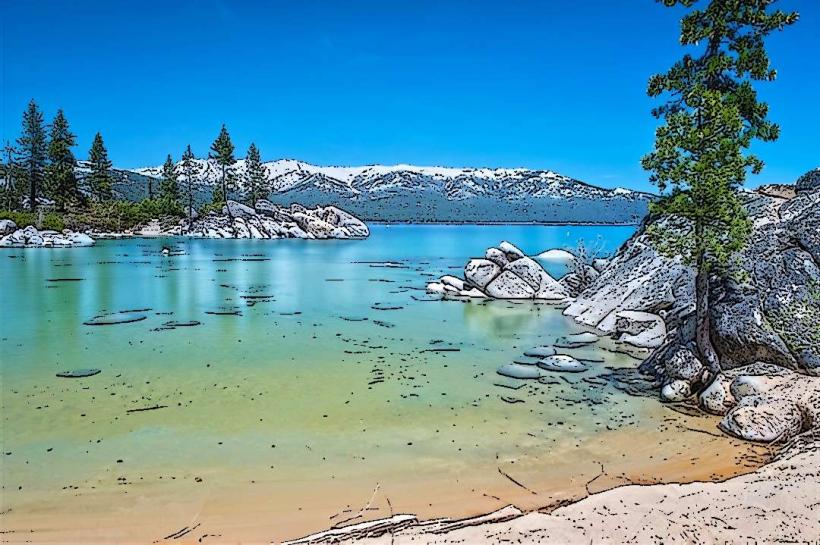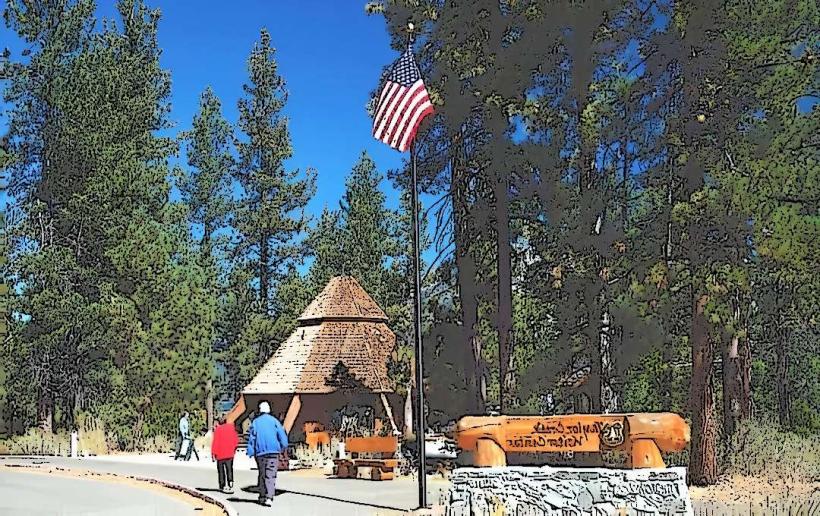Information
Landmark: Eagle FallsCity: Tahoe
Country: USA California
Continent: North America
Eagle Falls, Tahoe, USA California, North America
Eagle Falls is a stunning waterfall located in Emerald Bay State Park on the western shore of Lake Tahoe in California. It is one of the most popular and accessible natural attractions in the area, attracting visitors year-round, especially during the spring and early summer months when the snowmelt ensures a robust water flow.
Overview of Eagle Falls
The waterfall consists of two main sections: Upper Eagle Falls and Lower Eagle Falls, each offering different perspectives and experiences for visitors. The falls drop into Emerald Bay, creating a picturesque landscape that draws hikers, photographers, and nature lovers. The area surrounding Eagle Falls is part of a beautiful region known for its rugged terrain, alpine lakes, and pristine forests.
Upper Eagle Falls: This section of the waterfall is easily accessible and offers a quick, picturesque view. It drops approximately 100 feet into a small basin below, which is also where Eagle Lake is located.
Lower Eagle Falls: This section cascades down a steeper drop, with water flowing into the bay. The hike to this part of the falls provides visitors with a closer and more dramatic view.
Hiking Trails
There are two main trails that lead to the falls: one to Upper Eagle Falls and another to Lower Eagle Falls. Both are relatively short but provide different hiking experiences.
Upper Eagle Falls Trail
Distance: Approximately 0.25 miles round-trip
Difficulty: Easy
Trailhead: The trail begins at the Eagle Falls Picnic Area, which is easily accessible from Highway 89.
Description: The trail to Upper Eagle Falls is short and well-maintained, making it suitable for most visitors, including families with children. The trail leads to a viewpoint that overlooks the upper section of the falls and provides beautiful views of Eagle Lake and the surrounding mountains.
Lower Eagle Falls Trail
Distance: Approximately 1 mile round-trip
Difficulty: Moderate
Trailhead: Like the Upper Eagle Falls Trail, the trailhead for Lower Eagle Falls is also located at the Eagle Falls Picnic Area. This trail descends into a forested area and takes hikers down to the base of the falls.
Description: This trail offers a more immersive experience, as it provides a close-up view of the lower section of the falls and leads to the shore of Emerald Bay. It is a moderate hike with some elevation gain and a few rocky sections, so sturdy footwear is recommended.
Access and Parking
Eagle Falls is located off Highway 89, making it easy to reach by car. However, the parking area can be quite crowded, especially during peak seasons, so it's advisable to arrive early.
Eagle Falls Picnic Area: This is the main access point for the falls. The parking lot fills up quickly during the summer months, particularly on weekends and holidays. It offers free parking, but you should expect to spend some time searching for a spot during busy periods.
Vikingsholm Parking Lot: This is an additional parking area located just south of the Eagle Falls Picnic Area. It is the primary lot for visitors who are heading to Vikingsholm Castle but also provides convenient access to the Eagle Falls trailheads.
Bayview Trailhead: For those who want a slightly longer but quieter approach to Eagle Falls, the Bayview Trailhead located a little further north offers an alternative. This trailhead connects to the Bayview Trail, which can be used to reach the falls.
Best Time to Visit
Spring (May–June): Spring is the best time to visit Eagle Falls, as the snowmelt ensures a high flow of water, making the falls particularly dramatic. The surrounding forest comes to life with vibrant green hues, and wildflowers begin to bloom.
Fall (September–October): Fall offers cooler temperatures and beautiful autumn colors along the trail. The crowds are thinner than in summer, and the fall foliage adds an extra layer of beauty to the experience.
Summer (July–August): Summer is popular for those looking to enjoy a warm-weather hike, but it’s also the busiest time of the year. Expect high visitor numbers, especially during weekends and holidays.
Avoid Winter: The trail can be difficult to navigate in winter due to snow and icy conditions. While the falls can still be beautiful in winter, access may be limited or unsafe.
Tips for Hiking Eagle Falls
Footwear: Wear sturdy, non-slip hiking shoes or boots, especially if you're planning to hike to Lower Eagle Falls. The descent can be rocky, and the path may be slippery when wet.
Water and Snacks: Carry enough water, as there are no water sources along the trail. Snacks are a good idea, especially for the longer hike to Lower Eagle Falls.
Parking: As the parking areas fill up quickly during peak seasons, it is recommended to arrive early in the morning to secure a spot. On weekends and holidays, parking can be extremely limited.
Respect the Environment: Follow the Leave No Trace principles. Stay on designated trails, pack out all trash, and avoid disturbing the natural environment.
Wilderness Permits: If you plan to hike beyond Upper Eagle Falls into the Desolation Wilderness, a wilderness permit is required. These can be obtained at the trailhead.
Nearby Attractions
Vikingsholm Castle: Located at the base of the falls, Vikingsholm is a historic mansion that was built in the 1920s and offers guided tours. It is one of Lake Tahoe's most iconic landmarks, and its scenic beauty, combined with its history, makes it a must-visit.
Eagle Lake: Just beyond Upper Eagle Falls, Eagle Lake is a serene alpine lake that is perfect for a picnic or a peaceful rest after your hike. It is accessible via a moderate hike from Upper Eagle Falls.
Desolation Wilderness: This vast protected area is home to many high-altitude lakes, granite peaks, and miles of rugged trails. For those looking for more challenging hiking opportunities, Desolation Wilderness offers an abundance of scenic routes.
Conclusion
Eagle Falls is a breathtaking destination that offers a variety of experiences for nature lovers and outdoor enthusiasts. Whether you're looking for a quick, accessible hike to Upper Eagle Falls or a more challenging trek to the base of Lower Eagle Falls, the waterfall is a rewarding natural feature to visit year-round. The surrounding area, with its towering trees, alpine lakes, and historical landmarks, makes Eagle Falls an unforgettable destination in the Lake Tahoe region.

